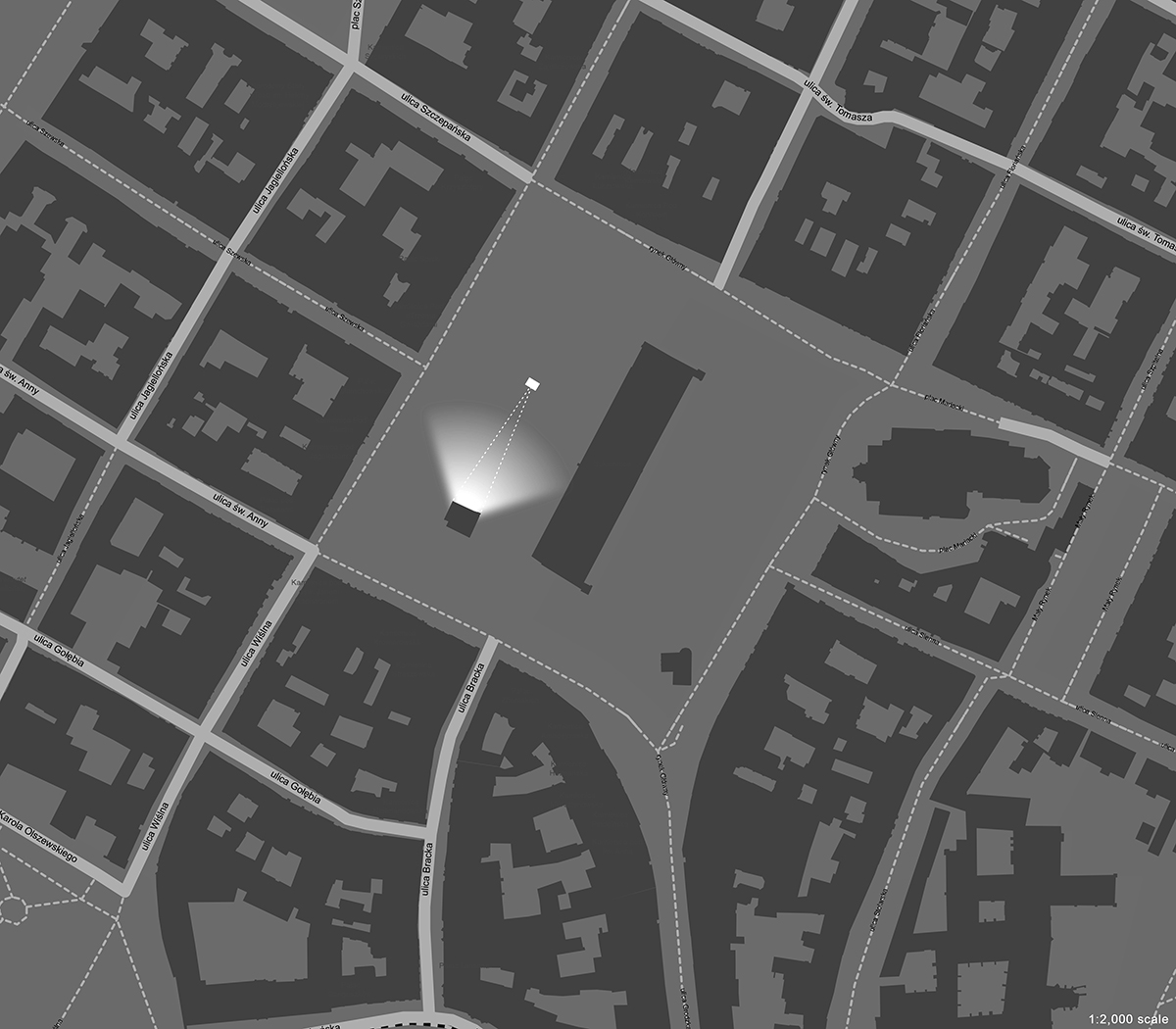Interrogative Design: Selected Works of Krzysztof Wodiczko – The City Hall Tower Projection
For the duration of the Interrogative Design exhibition, we will be providing expanded online content to give viewers a deeper access to selected projects. Materials for this exhibit provided by the artist, with unique edits specially produced for this project by GSD Exhibitions.
The City Hall Tower Projection, 1996, Kraków, Poland
• Rynek Główny 1, 30-001
• Run Dates: August 2–4, 1996
The Kraków projection represents a few firsts for Wodiczko in his public projections series: his first instance of using video projectors and speakers instead of slides and slide projectors, his first pre-recorded testimonials from members of a community, and his first public projection in Poland, his country of origin. For this project, he combined the experience of his previous monumental public projections with the social action of his communication-serving Instruments. In order to feature the real stories of the people of Kraków, this project demanded a longer engagement process, whereby Wodiczko began listening to a side of Kraków that was not publicly known, the hidden narrative of an insider’s perspective. The use of new technologies made it possible to give voice to those marginalized in public life, and through his listening phase, Wodiczko cultivated a set of protagonists whose stories compose the final projection: victims of family violence, disabled people, homeless people, drug addicts, homosexuals, and HIV carriers.
The images of the protagonists’ hands—gesticulating, peeling potatoes, holding a cigarette or a candle—were projected on the 14th-century City Hall Tower standing in Market Square. Over the course of three nights, the tower “spoke” with the voices and gestures of interviewees to the crowd below. The half-hour projection, looped into a two-hour recording of highly intimate confessions, broke the public silence about issues such as social exclusion, violence, crime, and alcohol and drug abuse.
This project was organized by Bunkier Sztuki Contemporary Art Gallery, the Andrzej Wajda Festival, and the City of Kraków as part of the Kraków 2000 celebration, with the cooperation of Women’s Center and with the project coordinated by Beata Nowacka-Kardzis. If, in Wodiczko’s early still-photography slide projections, the architecture became a target of the intervention, the addition of video and sound allowed the architecture to speak for the people, and, through their testimonies, the fixidity of the symbolic architecture became momentarily altered into a living monument.


